Butterflies and Moths
Media

Species Types
Scientific Name
About 75 species in North America north of Mexico
Description
Missouri has 16 species of saturniid, or giant silkworm moths. Many of them are spectacular, including the cecropia, luna, buck, io, imperial, polyphemus, rosy maple, spiny oakworm, and royal moths.
Media

Species Types
Scientific Name
About 250 species recorded for Missouri
Description
Geometrid moths usually hold their wide wings spread flat against the surface they’re resting on. The caterpillars in this large family are twig mimics; called inchworms or loopers, they “walk” by humping their backs.
Media
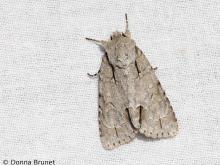
Species Types
Scientific Name
More than 2,500 species in North America north of Mexico
Description
One of the largest families of moths, noctuids used to be an even larger group. Many are tan or gray and resemble tree bark. Some are serious crop pests.
Media

Species Types
Scientific Name
Subfamily Arctiinae (formerly a family)
Description
Tiger and lichen moths, and their close relatives, often have bold patterns of black or white, plus yellow, orange, or red. Arctiid caterpillars are usually hairy, and some have stinging hairs.
Media
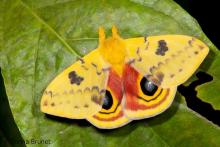
Species Types
Scientific Name
Automeris io
Description
The wings of male Io moths are usually yellow; those of females are reddish brown. When prodded, this moth parts its forewings to reveal hindwings with huge eyespots.
Media

Species Types
Scientific Name
About 50 species recorded from Missouri
Description
Prominent moths have a heavy covering of scales, so many of them look fuzzy. Some species curl their wings around their abdomens, which are lifted at an angle, so they resemble a twig.
Media
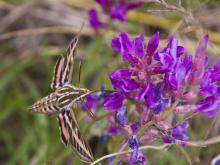
Species Types
Scientific Name
More than 50 species in Missouri
Description
Sphinx moths are usually large and heavy bodied, with a long, pointed abdomen. Members of this family often hover near flowers, feeding on nectar and looking like hummingbirds or bumblebees.
Media

Species Types
Scientific Name
Amphion floridensis
Description
The Nessus sphinx is a common Missouri moth. It hovers near flowers, collecting nectar, during the day and at dusk. The caterpillars eat plants in the grape family, including Virginia creeper.
Media
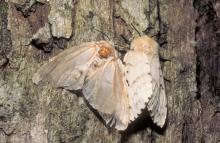
Species Types
Scientific Name
Lymantria dispar
Description
The spongy moth, introduced to our continent from Europe, has caused millions of dollars in damages to forests. Help protect our forests by learning how to recognize the spongy moth, and its larvae and egg masses, and report any occurrences you find.
Media
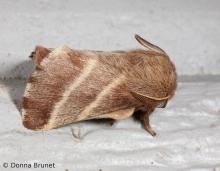
Species Types
Scientific Name
About 35 species in North America north of Mexico
Description
Tent caterpillar moths and lappet moths are medium-sized, with thick, long scales that make them look furry. The abdomen usually extends past the wings when they are folded back over the body.
See Also


Media

Species Types
Scientific Name
About 1,500 species in North America north of Mexico
Description
Adult caddisflies are mothlike. Their larvae are aquatic and build portable, protective cases out of local materials, including grains of sand, bits of leaves and twigs, and other debris.
Media

Species Types
Scientific Name
Corydalus cornutus
Description
Adult eastern dobsonflies are huge and mothlike, with large wings and a weak, fluttery flight. The fiercely predaceous aquatic larvae, called hellgrammites, are well-known to anglers, who often use them as bait.
About Butterflies and Moths in Missouri
Butterflies, skippers, and moths belong to an insect order called the Lepidoptera — the "scale-winged" insects. These living jewels have tiny, overlapping scales that cover their wings like shingles. The scales, whether muted or colorful, seem dusty if they rub off on your fingers. Many butterflies and moths are associated with particular types of food plants, which their caterpillars must eat in order to survive.





















